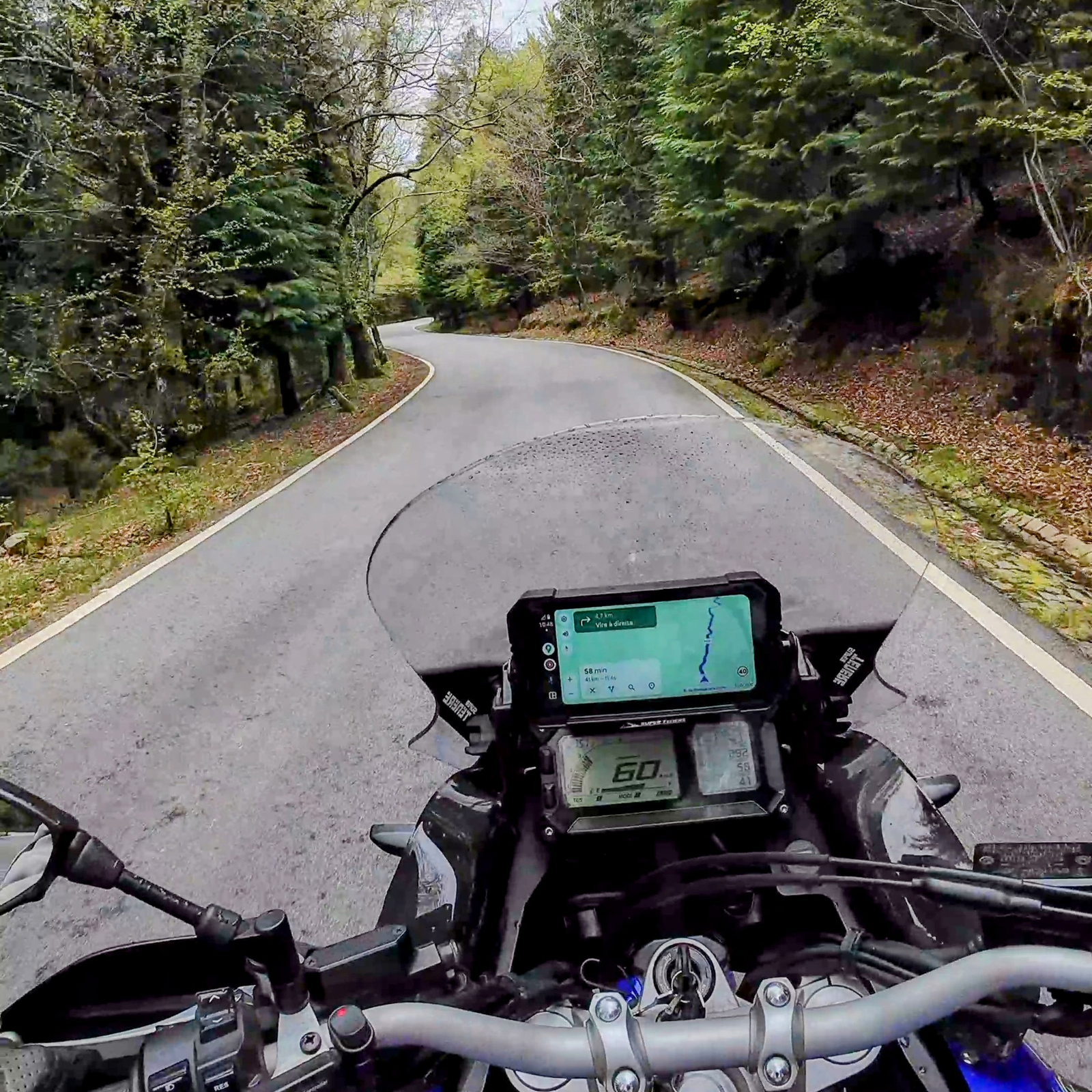Free shipping on orders over $199! 2 year warranty policy!
Free shipping on orders over $199! 2 year warranty policy!

Hard vs Soft Luggage for Adventure Bikes
August 26, 2025 2 min read
📸 Image credit: Roads4us
Finding What Works for Your Ride
Choosing luggage for an adventure bike isn’t as simple as it looks. Hard or soft? Security or flexibility? It all depends on how and where you ride. There’s no one-size-fits-all solution, just what works best for you and your trips.
 📸 Image credit: Nicolo Cadeddu
📸 Image credit: Nicolo Cadeddu
The Case for Hard Luggage
Hard panniers have their advantages.
They’re secure, easy to lock, and give you peace of mind when you’re parked up. Aluminium ones can take a beating — if you drop the bike, you can often bend them back into shape. And they’re tidy: no straps flapping in the wind, just clean lines and proper compartments.
Bonus: they double up as chairs, a table, or even a makeshift workbench at camp.
But they come with trade-offs.
They’re expensive. A complete set for a GS can cost a small fortune. They’re wide, which isn’t great for filtering through traffic. And if you ride off-road, there’s a risk — catch your leg between a pannier and the ground during a fall, and it can end badly.
So the key question is: how much real off-road are you doing?
If your trips are mostly tarmac, Hard Luggage might be the way to go.
 📸 Image credit: Roads4us
📸 Image credit: Roads4us
Soft Luggage – Light and Adaptable
Soft luggage is much more forgiving. It’s lighter, easier to pack, and less likely to cause injury if the bike tips over. If you’re riding trails or gravel tracks, this matters.
It’s also easier to repair on the go and doesn’t draw as much attention. Less chance someone thinks there’s something worth stealing inside.
On the downside, soft luggage isn’t as secure. You can lock it up or use a PacSafe net or a steel core cable, but if someone really wants to get in, they will.
That said, the same goes for hard cases. Your lock only does so much..
As for waterproofing? Some soft bags are great, others not so much. But most of the time, you’re putting your gear in dry bags anyway, no big deal.
 📸 Image credit: Nicolo Cadeddu
📸 Image credit: Nicolo Cadeddu
The Setup That Works
After trying everything, the setup that makes the most sense — for me — is a mix of both.
Rigid top box. Soft side panniers.
The top box is for valuables: camera gear, laptop, documents. Locked, protected, easy to get to.
Soft bags carry the rest. Everything else, clothes, camping gear, food. They keep the bike narrow, reduce weight, and make off-road sections less stressful.
It’s a good compromise. You get security where it counts and flexibility everywhere else.
 📸 Image credit: Nicolo Cadeddu
📸 Image credit: Nicolo Cadeddu
Final Thoughts
There’s no perfect system.
Your choice depends on your riding style, your destination, and what kind of travel experience you’re after.
Some riders need full hard luggage. Others go completely soft.
But if you’re after something practical, safe, and adaptable, the mixed approach works surprisingly well.
In the end, the best luggage is the one that lets you ride the way you want, without getting in the way.

